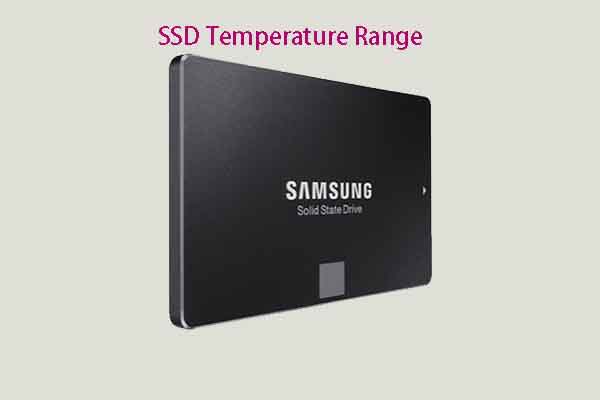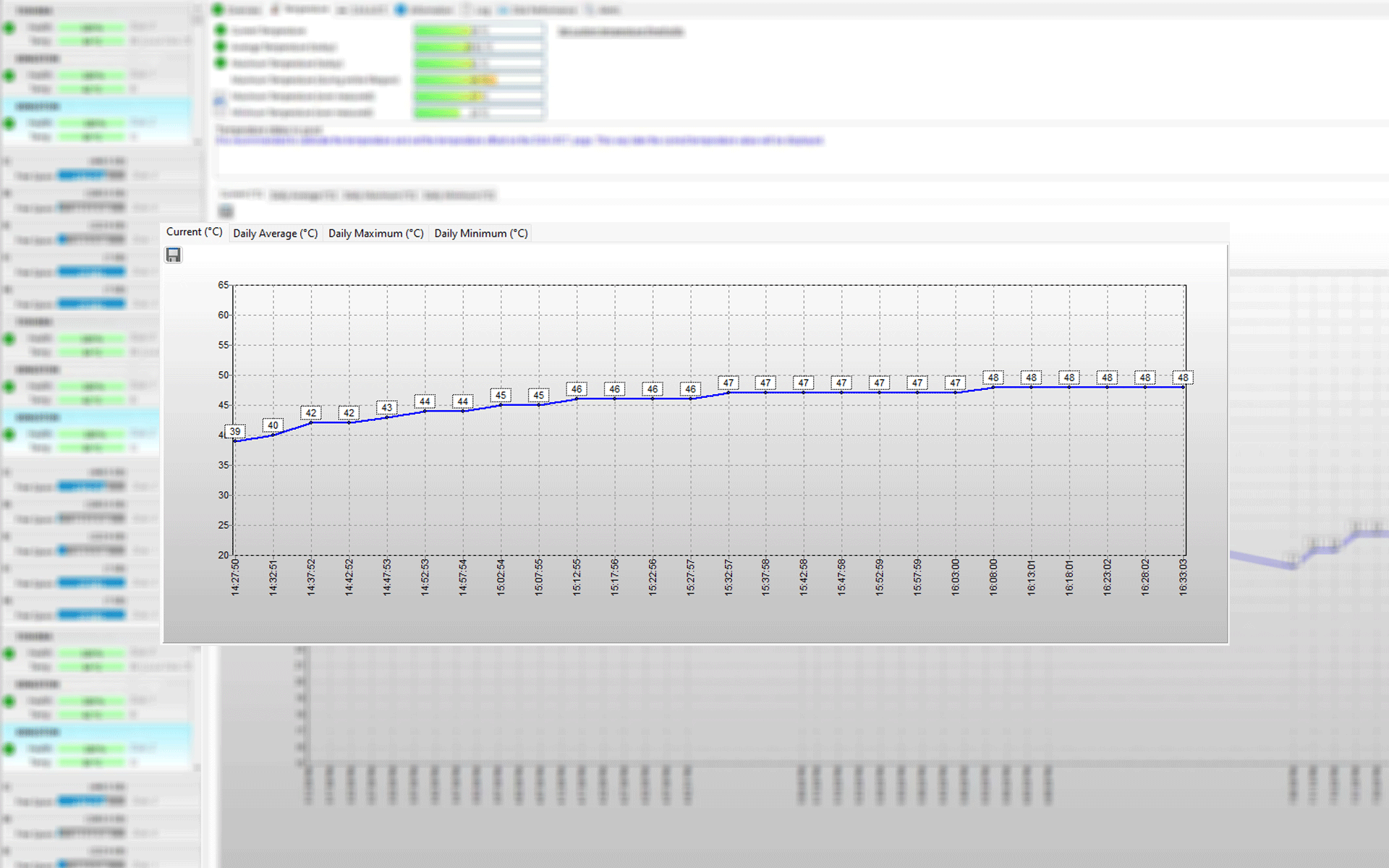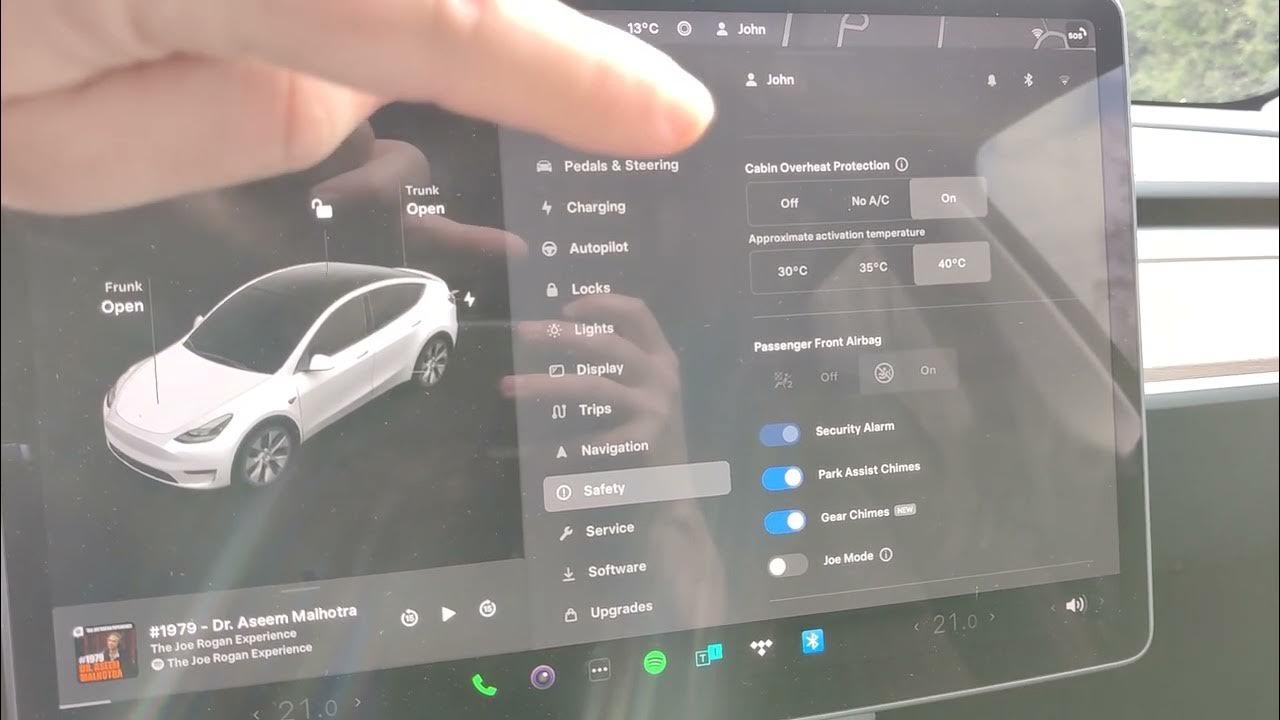Welcome to Tesla Motors Club
Discuss Tesla's Model S, Model 3, Model X, Model Y, Cybertruck, Roadster and More.
Register
Install the app
How to install the app on iOS
You can install our site as a web app on your iOS device by utilizing the Add to Home Screen feature in Safari. Please see this thread for more details on this.
Note: This feature may not be available in some browsers.
-
Want to remove ads? Register an account and login to see fewer ads, and become a Supporting Member to remove almost all ads.
You are using an out of date browser. It may not display this or other websites correctly.
You should upgrade or use an alternative browser.
You should upgrade or use an alternative browser.
Best reliable SSD for Sentry on Model Y
- Thread starter alitech
- Start date
-
- Tags
- tesla sentry mode
The USB-A stick supplied by Tesla is a high endurance Samsung Bar Plus. It will not die anytime soon. They have 5 year warranty. I have attached the spec sheet so you can see it is built to withstand extreme temperatures. The memory used is meant for many read/writes too, if you read very carefully and compare to other Samsung products for video recording you'll see it is the same memory...hence why Tesla uses it. It's a GREAT DEAL. The 128GB is $16 and the 256GB is $20. I've had my Tesla supplied usb-a for 1.5 years, no issue. I have a 2022 Model Y as well. I live in HOT California where my cabin gets 140F so issues during summer. Save your $$$, you do not need an expensive SSD.
Don't believe the nonstop flood of fear that your USB-A will fail quickly. Maybe in the past Tesla applied substandard USB stick but not these days. I notice the fear is spread by people who get paid as affiliates when devices are sold. If anything, replace the USB-A when it breaks. Not before. Now if you need the SSD for other reasons like you want to throw tons of music on it and setup a music partition in addition to sentry partition, well that's a good reason to buy new hardware.
Thx for sharing. Yeah buying the Samsung Bar Plus 256GB look like a much more reliable option than SD cards. I don't like adapter since it adds one more layer of possible failure, and I don't think SD card can have longer lifespan than USB-A stick or SSD. Yeah I agree the car high temperature would kill most of the SSD and even the "extreme" SSD models do not mention they are against heat, but seem like USB-A stick can against heat pretty well so that's why Tesla put a USB-A stick sticker by default.
UoMDeacon
Member
That's mildly incorrect. The Samsung Pro Endurance series of SD cards are designed for continuous read/write cycles for videos. Operating specs are the same as the Samsung Bar Plus. Make the choice based on cost and if you want to have an extra port available. I'm using the SD card in a tiny reader that gives me the option to plug in 2 more USB-A items if I wanted to. I do think the SSDs that are always recommended on this forum are overkill though. Unless you need ALL of your music collection, what's the reason to have 1TB of storage?Thx for sharing. Yeah buying the Samsung Bar Plus 256GB look like a much more reliable option than SD cards. I don't like adapter since it adds one more layer of possible failure, and I don't think SD card can have longer lifespan than USB-A stick or SSD. Yeah I agree the car high temperature would kill most of the SSD and even the "extreme" SSD models do not mention they are against heat, but seem like USB-A stick can against heat pretty well so that's why Tesla put a USB-A stick sticker by default.
I will buy samsung bar plus 256gb orm
Normal SSD only has around 30 degrees limit and that should be a main reason why a lot of people report ssd just stop working, car directly under sun can easily go over 40 degrees.
Micro SD endurance version is durable but reader or adapter may not be that durable especially under extreme temperature.
That's mildly incorrect. The Samsung Pro Endurance series of SD cards are designed for continuous read/write cycles for videos. Operating specs are the same as the Samsung Bar Plus. Make the choice based on cost and if you want to have an extra port available. I'm using the SD card in a tiny reader that gives me the option to plug in 2 more USB-A items if I wanted to. I do think the SSDs that are always recommended on this forum are overkill though. Unless you need ALL of your music collection, what's the reason to have 1TB of storage?
Normal SSD only has around 30 degrees limit and that should be a main reason why a lot of people report ssd just stop working, car directly under sun can easily go over 40 degrees.
Micro SD endurance version is durable but reader or adapter may not be that durable especially under extreme temperature.
Ostrichsak
Well-Known Member
Uh... wut?I will buy samsung bar plus 256gb orm
Normal SSD only has around 30 degrees limit and that should be a main reason why a lot of people report ssd just stop working, car directly under sun can easily go over 40 degrees.
Micro SD endurance version is durable but reader or adapter may not be that durable especially under extreme temperature.
I assume you're talking 30 Celsius. If that's the case, most SSDs are rated for an operating range up to 70 degrees Celsius or twice the number you claim they shouldn't be used above. Also, these cars have cabin over-heat protection enabled by default. If you're worried about high temperature's affects on your electronic components you really shouldn't be disabling this feature.
Unless I missed something, or you're using an unknown unit of measurement w/o specifying, this post is filled with misinformation.
Uh... wut?
I assume you're talking 30 Celsius. If that's the case, most SSDs are rated for an operating range up to 70 degrees Celsius or twice the number you claim they shouldn't be used above. Also, these cars have cabin over-heat protection enabled by default. If you're worried about high temperature's affects on your electronic components you really shouldn't be disabling this feature.
Unless I missed something, or you're using an unknown unit of measurement w/o specifying, this post is filled with misinformation.
Operating Temperature 5°C to 35°C
Ostrichsak
Well-Known Member
Operating Temperature 5°C to 35°C

SSD Temperature Range: Everything You Should Know
What’s your SSD temperature range? If you aren’t clear about it, you can check that by referring to this tutorial.

What is a Safe Hard Drive Temp and How Can You Monitor It?
Learn how to monitor and maintain safe hard drive temperature to prevent data loss and damage. Discover the optimal temperature range and causes of overheating.
hdsentinel.com

Samsung Magician's Hot SSDs Aren't Actually All That Hot
SSDs are reporting as overheating in Samsung Magician, is it real or is it make believe.
 www.pugetsystems.com
www.pugetsystems.com
I could post many, many more but the internet is a wide resource and I don't have time to cite the world's mentions of an industry-wide standard. If what you say is true, PCs would have been melting down left and right for decades now given typical operating temps.
Most SSDs don't even thermal throttle until 70-75 degrees Celsius. If what you say is true, then why wouldn't they thermal throttle at 35 or lower? Makes no sense for them to allow destructive operating temperatures when they could easily slide the thermal throttle barrier much lower if there was a true concern for damage. Engineers who created the devices determined the optimal thermal operating range. I tend to trust what they think more than some sales webpage.
Even if you don't agree with industry standards including the drive's own firmware thermal safety settings, Teslas come with a feature called "Cabin Overheat Protection" that's enabled by default to keep the cabin temperature below 100 degrees Fahrenheit which still makes this conversation a non-issue. Unless you disabled this.
I, for one, don't worry about the electronics in a car because I know what temperatures they're engineered for and I still leave cabin overheat protection enabled. You seem to be far more concerned about this than I am so explain why you'd ever disable the one feature literally designed for this exact concern.

SSD Temperature Range: Everything You Should Know
What’s your SSD temperature range? If you aren’t clear about it, you can check that by referring to this tutorial.www.partitionwizard.com

What is a Safe Hard Drive Temp and How Can You Monitor It?
Learn how to monitor and maintain safe hard drive temperature to prevent data loss and damage. Discover the optimal temperature range and causes of overheating.hdsentinel.com

Samsung Magician's Hot SSDs Aren't Actually All That Hot
SSDs are reporting as overheating in Samsung Magician, is it real or is it make believe.www.pugetsystems.com
I could post many, many more but the internet is a wide resource and I don't have time to cite the world's mentions of an industry-wide standard. If what you say is true, PCs would have been melting down left and right for decades now given typical operating temps.
Most SSDs don't even thermal throttle until 70-75 degrees Celsius. If what you say is true, then why wouldn't they thermal throttle at 35 or lower? Makes no sense for them to allow destructive operating temperatures when they could easily slide the thermal throttle barrier much lower if there was a true concern for damage. Engineers who created the devices determined the optimal thermal operating range. I tend to trust what they think more than some sales webpage.
Even if you don't agree with industry standards including the drive's own firmware thermal safety settings, Teslas come with a feature called "Cabin Overheat Protection" that's enabled by default to keep the cabin temperature below 100 degrees Fahrenheit which still makes this conversation a non-issue. Unless you disabled this.
I, for one, don't worry about the electronics in a car because I know what temperatures they're engineered for and I still leave cabin overheat protection enabled. You seem to be far more concerned about this than I am so explain why you'd ever disable the one feature literally designed for this exact concern.
It officially clearly says Operating Temperature 5°C to 35°C
SE920 External Solid State Drive|ADATA
The ADATA SE920 External SSD is the next-generation USB4 solution. Its patented outer shell can be activated to engage a built-in micro fan, enhancing heat dissipation. This 2TB external SSD features a Type-C interface.
| Op. Temperature | 5°C(41°F) to 35°C (95°F) |
|---|
Ostrichsak
Well-Known Member
Even if you don't agree with industry standards including the drive's own firmware thermal safety settings, Teslas come with a feature called "Cabin Overheat Protection" that's enabled by default to keep the cabin temperature below 100 degrees Fahrenheit which still makes this conversation a non-issue. Unless you disabled this.It officially clearly says Operating Temperature 5°C to 35°C
I, for one, don't worry about the electronics in a car because I know what temperatures they're engineered for and I still leave cabin overheat protection enabled. You seem to be far more concerned about this than I am so explain why you'd ever disable the one feature literally designed for this exact concern.
Even if you don't agree with industry standards including the drive's own firmware thermal safety settings, Teslas come with a feature called "Cabin Overheat Protection" that's enabled by default to keep the cabin temperature below 100 degrees Fahrenheit which still makes this conversation a non-issue. Unless you disabled this.
I, for one, don't worry about the electronics in a car because I know what temperatures they're engineered for and I still leave cabin overheat protection enabled. You seem to be far more concerned about this than I am so explain why you'd ever disable the one feature literally designed for this exact concern.
The LaCie Rugged BOSS SSD was designed to operate at an ambient temperature of 0C to 35C.
Ostrichsak
Well-Known Member
Even if you don't agree with industry standards including the drive's own firmware thermal safety settings, Teslas come with a feature called "Cabin Overheat Protection" that's enabled by default to keep the cabin temperature below 100 degrees Fahrenheit which still makes this conversation a non-issue. Unless you disabled this.The LaCie Rugged BOSS SSD was designed to operate at an ambient temperature of 0C to 35C.
I, for one, don't worry about the electronics in a car because I know what temperatures they're engineered for and I still leave cabin overheat protection enabled. You seem to be far more concerned about this than I am so explain why you'd ever disable the one feature literally designed for this exact concern.
Even if you don't agree with industry standards including the drive's own firmware thermal safety settings, Teslas come with a feature called "Cabin Overheat Protection" that's enabled by default to keep the cabin temperature below 100 degrees Fahrenheit which still makes this conversation a non-issue. Unless you disabled this.
I, for one, don't worry about the electronics in a car because I know what temperatures they're engineered for and I still leave cabin overheat protection enabled. You seem to be far more concerned about this than I am so explain why you'd ever disable the one feature literally designed for this exact concern.
I have already show you three different ssd brands having 35 degrees limit, this is real industry standard.
Ostrichsak
Well-Known Member
Even if you don't agree with industry standards including the drive's own firmware thermal safety settings, Teslas come with a feature called "Cabin Overheat Protection" that's enabled by default to keep the cabin temperature below 100 degrees Fahrenheit which still makes this conversation a non-issue. Unless you disabled this.I have already show you three different ssd brands having 35 degrees limit, this is real industry standard.
I, for one, don't worry about the electronics in a car because I know what temperatures they're engineered for and I still leave cabin overheat protection enabled. You seem to be far more concerned about this than I am so explain why you'd ever disable the one feature literally designed for this exact concern.
Even if you don't agree with industry standards including the drive's own firmware thermal safety settings, Teslas come with a feature called "Cabin Overheat Protection" that's enabled by default to keep the cabin temperature below 100 degrees Fahrenheit which still makes this conversation a non-issue. Unless you disabled this.
I, for one, don't worry about the electronics in a car because I know what temperatures they're engineered for and I still leave cabin overheat protection enabled. You seem to be far more concerned about this than I am so explain why you'd ever disable the one feature literally designed for this exact concern.
I have shown you all three official links, you just keep copying wording without any link or whatever to prove whatever you want to say, pretty low quality
Ostrichsak
Well-Known Member
Have you even read what I said? You haven't acknowledged it once and keep posting links to random posts from random sources that back up what you say even though it's not important to the overall picture here. It's the internet. I can find a post somewhere about literally anything. Doesn't make it right. That's why I keep reposting that portion of my previous post because it supersedes this entire operating temperature conversation which I could be wrong on (but I'm not). There's a lot of reasons to base your choice of storage for this purpose on... temperature isn't one of them. Just leave Cabin Overheat Protection enabled in your Tesla and none of this "optimal temperature" talk matters. Done. You're overthinking the optimal temperature aspect entirely.I have shown you all three official links, you just keep copying wording without any link or whatever to prove whatever you want to say, pretty low quality
Have you even read what I said? You haven't acknowledged it once and keep posting links to random posts from random sources that back up what you say even though it's not important to the overall picture here. It's the internet. I can find a post somewhere about literally anything. Doesn't make it right. That's why I keep reposting that portion of my previous post because it supersedes this entire operating temperature conversation which I could be wrong on (but I'm not). There's a lot of reasons to base your choice of storage for this purpose on... temperature isn't one of them. Just leave Cabin Overheat Protection enabled in your Tesla and none of this "optimal temperature" talk matters. Done. You're overthinking the optimal temperature aspect entirely.
Cabin overheat protection does not control the temperature to below 35 degrees. All my 3 links are popular SSD official specs. They just stop functioning normally once temperature is way above 35 which easily happen in summer.
Ostrichsak
Well-Known Member
Actually, it does. That's been my point the entire time that you have conveniently side-stepped as if it's not even relevant when it's THE answer. Have you even looked at your Cabin Overheat Protection settings?Cabin overheat protection does not control the temperature to below 35 degrees. All my 3 links are popular SSD official specs. They just stop functioning normally once temperature is way above 35 which easily happen in summer.
Here, I even found a picture in celsius so you don't have to do any math for the unit of measurement that drive manufacturers use:

From the factory it's enabled and set to 40°C (roughly 100 in freedom units for us yanks). Click 35°C or even 30°C if you really want to overthink things and then simply go on with life. This topic isn't complex enough to warrant this many pages of debating a tenth of a degree in something non-mission-critical like an external USB drive for sentry mode storage.
Actually, it does. That's been my point the entire time that you have conveniently side-stepped as if it's not even relevant when it's THE answer. Have you even looked at your Cabin Overheat Protection settings?
Here, I even found a picture in celsius so you don't have to do any math for the unit of measurement that drive manufacturers use:

From the factory it's enabled and set to 40°C (roughly 100 in freedom units for us yanks). Click 35°C or even 30°C if you really want to overthink things and then simply go on with life. This topic isn't complex enough to warrant this many pages of debating a tenth of a degree in something non-mission-critical like an external USB drive for sentry mode storage.
You use air conditioning to burn your car battery for an SSD to work? Such a genius. Why not just move to Iceland for the SSD to work?
Ostrichsak
Well-Known Member
Cabin Overheat Protection is to protect ALL of your electronics. Most of which cost far more to replace than some $10 throw-away external USB drive you're so hung up on. The default is on from the factory but I guess you know more than Tesla engineers about these types of things... right? If you disable that to save a buck or two a month on energy it's you who is the genius.You use air conditioning to burn your car battery for an SSD to work? Such a genius. Why not just move to Iceland for the SSD to work?
Not sure why you're attacking me personally & being rude considering it's pretty clear that you have no idea what you're talking about on this subject in this thread. On the other hand, I've worked in the IT industry at various capacities over the last few decades and have untold time deploying, optimizing and trouble shooting the exact devices of which you speak. Never mind that you clearly know nothing other than random spec sheets you Google'd up.
Buying a drive type based solely on being worried about a couple of degrees while simultaneously disabling the cabin heat overprotection of a computer on wheels that costs tens of thousands of dollars has got to be one of the dumbest things I've ever read on this forum. Good thing you bought that drive that can take a couple of degrees more since it's the only piece of electronics in the car. /sarcasm
Sorry I helped. Enjoy your USB drive champ.
Last edited:
Similar threads
- Replies
- 2
- Views
- 3K
- Question
- Replies
- 9
- Views
- 2K
- Replies
- 3
- Views
- 955
- Replies
- 18
- Views
- 4K


